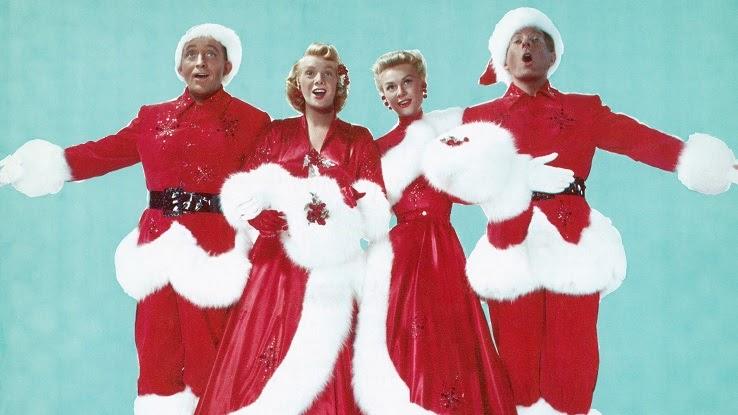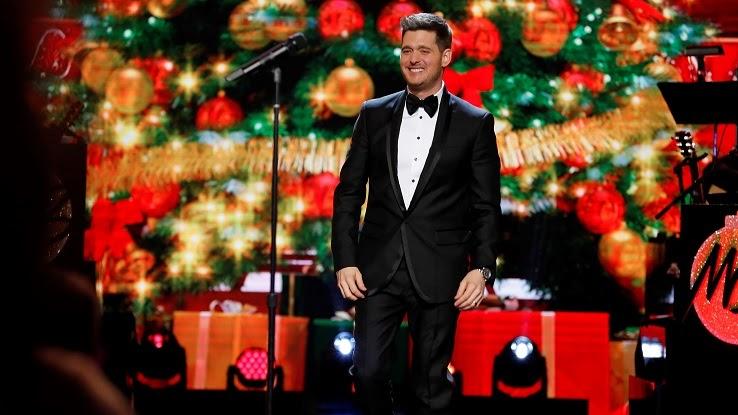Song With Woman Falling in a White Dress

Chances are, as you roll into winter, you'll begin to hear the classic hit "White Christmas" repeatedly on the radio, at holiday parties, over grocery store loudspeakers and on Christmastime playlists. From there, it'll earworm its way into your brain, and you'll find yourself unexpectedly thinking of treetops glistening and children listening as the calendar makes way for December 25. But once the date passes, the lyrics vanish from your memory until the next winter, leaving a little bit of nostalgia in their wake.
Although the classic tune might not cross your mind for the majority of the year, "White Christmas" is actually the world's best-selling single in music history, having sold over 50 million copies since it was released in 1942. The iconic holiday track written by notable composer Irving Berlin was popularized by Bing Crosby, one of the top entertainers of the 20th century and the notable "King of Christmas." But what exactly made this tune in particular so ubiquitous and enduring? To answer this question, we're taking a merry and bright look into the history of the festive tune and its celebrated singer.
How Did Bing Crosby Become the "King of Christmas"?

Harry "Bing" Crosby, born May 3, 1903, became one of the most successful musicians of the 20th century, his passion for music beginning when he was around 15. As a teenager, he worked at an auditorium called Spokane's, where he was often in contact with local and touring musicians. One of these performers included Al Jolson, a famed entertainer of the 1920s.
Seeing Jolson sing and dance struck a chord in Crosby, and the young artist began to consider a career in the entertainment industry. After enrolling at Gonzaga University and running a band with college friends, Crosby relocated to Los Angeles to pursue music full-time. He enjoyed some success in smaller performances throughout the 1920s, but it wasn't until 1931, when Crosby signed a solo contract with producer Mack Sennett, that his career began to take off.
In 1931, Crosby landed a CBS radio show. On it, he performed a number of original tunes that repeatedly found public acclaim. The emerging artist spearheaded new forms of non-formal swing music, including the wildly popular vocal "crooning." His innovations with this style of jazz resulted in a warm yet energetic musical experience that delighted listeners and helped solidify his name in the industry. Crosby also drew on inspiration from other genres, including pop and western, to entice new audiences. His kind public image, unique music and enchanting voice soon turned him into a beloved public figure.
Crosby's success as a singer opened the door for him to pursue an acting career and saw him performing in films such asGoing Hollywood (1933),Pennies From Heaven (1936) andRhythm on the River (1940). As his career flourished after he signed with Paramount Pictures, numerous composers clamored to write songs for him to perform. Throughout his tenure in the entertainment business, Crosby recorded over 1,600 songs — but despite the enormity of this repertoire, there's one tune that stands out amongst the rest as the most successful of Crosby's lifetime: the holiday hit "White Christmas."

By the time Crosby was introduced to "White Christmas," the artist was already known well in the entertainment industry. So, it's particularly interesting that a Christmas jingle ended up as one of the standout performances of his successful career.
Irving Berlin, the songwriter who penned "White Christmas," was an equally famous composer who created hundreds of hit songs throughout his career. He originally wrote the holiday song as an accompanying track for the 1942 filmHoliday Inn, which starred Crosby, Marjorie Reynolds and Fred Astaire in the leading roles. Crosby first performed the song on Christmas Day in 1941 on the NBC radio show,The Kraft Music Hall.
The eventual classic went on to earn an Academy Award for Best Original Song in 1942, a win largely owed to the captivating performance featured inHoliday Inn by duet partners Crosby and Reynolds. It also became the featured tune for the hit filmWhite Christmas, which was one of the top-earning movies of 1954.
While Christmas songs had never previously topped the charts beyond the winter season, Crosby's rendition became more than a symbol of the holiday. The lyrics painted the picture of an ideal life — time spent at home with loved ones — and captured the nostalgia of holiday seasons past.
Why Has "White Christmas" Continued to Captivate Us?

"White Christmas" has continued to echo as one of the top Christmas classics in history. By the 2010s, the Bing Crosby version of the song had sold over 50 million copies, making it the best-selling single of all time. According to the 2009 version of theGuinness Book of World Records, the song has sold approximately 100 million copies across various versions that include covers by other artists.
But how did a mellow tune from the 1940s manage to stay so relevant after all these years — and why haven't other Christmas songs replicated similar popularity? Some of the song's initial success is due to the fact that, during and following WWII, "White Christmas" gave soldiers a warm reminder of home and helped people think of the possibility of peace while recalling simpler days of yore. "It was the enthusiasm of these troops that really propelled the song and made it a hit," Jody Rosen, author ofWhite Christmas: the Story of an American Song, told CBS.
The dreamily evocative lyrics served as a balm to soothe the homesickness of people overseas, which largely allowed it to take hold in U.S. cultural consciousness. But the efforts of other artists have kept the tune alive, too. Besides Crosby's honorary place on most Christmas radio broadcasts and holiday music playlists, the song seems to be renewed each season by artists who also adore the heartwarming tune. Approximately 500 other versions of the song have been produced by a roster of artists that includes greats like Frank Sinatra, Michael Buble, Elvis Presley, Billy Idol, Dean Martin and Kelly Clarkson.
Even with changes in the ways that audiences consume music, the single hasn't fallen in popularity. The streaming platform Spotify boasts that "White Christmas" has been streamed over 257 million times. "Winter Wonderland" has received over 112 million streams, and "It's Beginning to Look a Lot Like Christmas" has charted over 81 million plays. And to this day, Crosby's legacy highlights his key contribution to our library of Christmas singles — it's truly his performance, more than any other, that helps us immerse ourselves in the merry and bright feelings of the holiday season.
Source: https://www.ask.com/entertainment/white-christmas-best-selling-song-history?utm_content=params%3Ao%3D740004%26ad%3DdirN%26qo%3DserpIndex&ueid=0687f720-8399-4aad-a3fa-5f4949cf5f9e
0 Response to "Song With Woman Falling in a White Dress"
Post a Comment